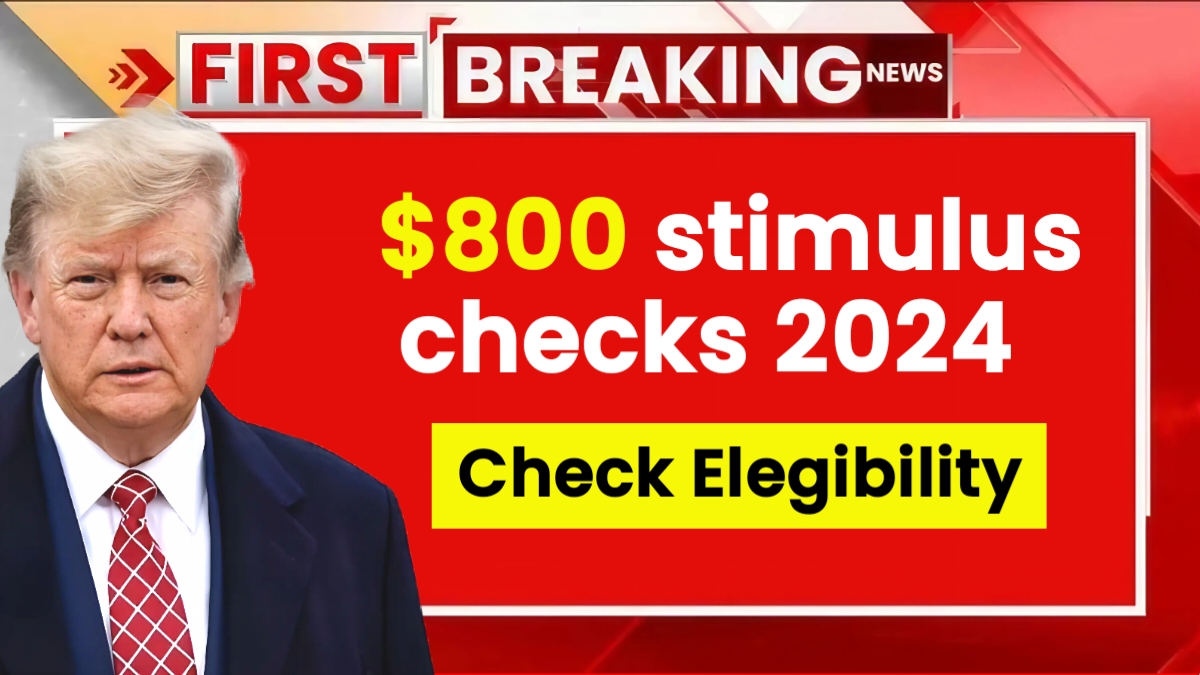$800 Stimulus Checks 2024: A new stimulus initiative targeting seniors and low-income Americans is under consideration, potentially offering $800 payments to help combat rising living costs. While this proposal has not yet received official confirmation from the Internal Revenue Service (IRS) or federal government, it represents a focused approach to supporting vulnerable populations facing economic challenges. Unlike previous broader stimulus programs, this initiative specifically aims to assist those living on fixed incomes during a period of significant inflation.
Program Overview and Structure
The proposed stimulus program would be administered through the U.S. Department of the Treasury, with a targeted focus on senior citizens. Currently planned as a one-time payment of $800, the initiative is tentatively scheduled for distribution in mid-November 2024. The payment would be delivered either through direct deposit for those with banking information on file or via traditional mailed checks for others.
Intended Benefits and Impact
The proposed $800 stimulus payment aims to provide meaningful financial support in several key areas:
Daily Necessities:
- Assistance with essential grocery expenses
- Support for utility bill payments
- Help with medication costs
- Coverage for basic household needs
The payment is designed to prevent recipients from facing difficult choices between essential needs. For seniors living on fixed incomes, $800 could represent significant relief, potentially covering several weeks of grocery expenses or a month’s worth of utility bills. Beyond immediate financial assistance, the stimulus could offer psychological benefits by reducing stress related to financial insecurity.
Anticipated Eligibility Requirements
While exact eligibility criteria await official confirmation, the program is expected to implement specific qualifying standards:
Age and Citizenship Requirements:
- Minimum age of 65 years
- Valid Social Security number
- Permanent U.S. residency status
Income Thresholds:
- Individual income limit of $75,000 annually
- Joint filing couples’ income limit of $150,000
- Possible consideration for current Social Security benefit recipients
These requirements would help ensure the assistance reaches those most in need while maintaining program efficiency and proper resource allocation.
Distribution Timeline and Process
The proposed distribution schedule centers around November 2024, with initial payments potentially beginning mid-month. The distribution process is expected to follow established patterns from previous stimulus programs:
First Wave:
- Direct deposits to recipients with current banking information
- Priority processing for seniors with existing federal benefit arrangements
Second Wave:
- Paper check distribution to recipients without direct deposit
- Systematic mailing based on geographic regions
Preparation Steps for Potential Recipients
While awaiting official program confirmation, potential recipients can take several preparatory steps:
Document Organization:
- Ensure Social Security information is current
- Gather recent tax return documents
- Verify income documentation
- Update citizenship verification papers
Account Management:
- Confirm banking information accuracy
- Verify current mailing address with IRS
- Keep records of previous federal benefits
- Monitor official communications
Application Process Expectations
Based on preliminary information, the stimulus payment process may be streamlined for many eligible recipients:
Automatic Enrollment:
- Recent tax filers may be automatically considered
- Current Social Security beneficiaries might receive automatic payments
- Previous stimulus recipients could be pre-registered
Manual Registration:
- New procedures may be required for non-filers
- Special provisions for those without recent tax returns
- Possible additional steps for first-time benefit recipients
Financial Planning Considerations
While the proposed stimulus offers potential relief, financial experts suggest approaching it with measured expectations:
Immediate Planning:
- Avoid making financial commitments based on proposed payments
- Continue maintaining current budgeting practices
- Consider the payment as supplemental rather than primary income
- Plan for strategic use of funds if received
Long-term Considerations:
- View the stimulus as temporary assistance
- Maintain existing financial management strategies
- Continue regular saving practices where possible
- Keep emergency funds intact
Staying Informed and Updated
Following reliable information sources remains crucial as this proposal develops:
Official Channels:
- IRS website updates
- Treasury Department announcements
- Social Security Administration communications
- Congressional news releases
Information Verification:
- Cross-reference multiple official sources
- Avoid unofficial or unverified information
- Be cautious of potential scams or misinformation
- Maintain awareness of evolving program details
Conclusion
The proposed $800 stimulus check program represents a targeted approach to supporting seniors and low-income Americans facing economic challenges. While the initiative awaits official confirmation and implementation details, understanding its potential structure and requirements can help eligible recipients prepare appropriately. The focused nature of this program, specifically targeting seniors and those with fixed incomes, reflects an awareness of the unique challenges faced by these populations during periods of economic stress.
As this proposal continues through the legislative and planning processes, potential recipients should maintain regular monitoring of official sources for updates while continuing their current financial management practices. The success of such a program would depend not only on efficient implementation but also on clear communication with intended recipients and careful coordination among various government agencies.
Remember that until official announcements are made, this information remains preliminary and subject to change. Individuals should rely on official government sources for the most current and accurate information about any stimulus programs or financial assistance initiatives.










